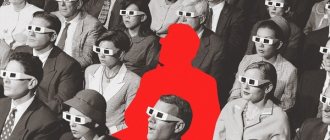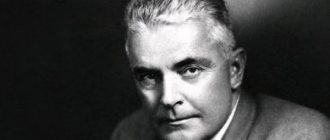The art of management implies solving specific tasks using all available resources (human, industrial, temporary). Personnel management is a special type of activity that implements and summarizes a huge array of issues that take into account the personal factor of administration. There are several styles of coordinating staff activities. Among them, one of the most interesting is the democratic management style. It has certain characteristics, pros, and cons that need to be considered in detail.
Definition
The democratic management style is characterized by the fact that various powers, initiatives and even responsibilities are distributed between the manager and his subordinates. Its main component is the manager’s interest in the opinions of employees. In difficult situations related to production, a collective decision is made. A democratic management style implies that in the course of constant communication and discussion, timely information is provided on all major issues that in one way or another relate to the functioning of the company. Awareness of employees (within the limits of their qualifications) strengthens the sense of belonging and self-worth of all members of the company’s team without exception.
Qualities of a leader and subordinates
In such companies, the manager is distinguished by high professionalism and leadership. The group respects him and sees him as a role model. The qualities of a democratic boss include:
- openness and accessibility during appeals and personal meetings with staff;
- trust in employees;
- the ability to delegate rights and tolerate the denial of personal benefits associated with the position.
The manager is obliged to adhere to mandatory non-interference in collegial work.
Employees, for their part, must follow the corporate style, showing the following qualities:
- professionalism;
- responsibility;
- self-control;
- desire for personal growth and desire to participate in the life of the company.
Typically, employees involved in common work are interested in achieving corporate goals, value the opinions of their colleagues about themselves and are clearly aware of their control rights.
We are one team
Features and characteristics of a democratic management style
Particular attention should be paid to the form of communication. It is in the nature of recommendations, requests, encouragements. And if necessary, an order is applied. A polite and friendly manager provides a favorable psychological climate at work. This type of manager prefers team play. The leader does not see himself as a puppeteer pulling the strings of power. The main motivation for such actions is that, under favorable conditions, employees themselves strive for responsibility, becoming involved in solving certain organizational issues. A space for maneuver appears in which self-control and self-government can be organized.
Within the framework of a democratic management style, two forms should be distinguished: consultative and participatory.
Each form has its own characteristics and characteristics.
The last word belongs to the head of the department. Do not change the decisions made.
Let the leader adhere to the following rule: everyone can speak, but the last word belongs to him. If a decision is announced, the manager does not deviate from it (although if the decision was wrong, this must be openly admitted). Throwing brings a feeling of chaos to work and undermines the authority of the manager. Strict adherence to the decision made will eliminate the feeling of unlimited freedom that employees may have during discussions and will act as a deterrent, reminding them that freedom is a conscious necessity and responsibility.
Case Study
In 2014, Mary Barra became CEO of General Motors. They said about her: she interrupted the era of kings in the automotive industry - general directors who made decisions individually. BARRA develops an action plan collectively, listens carefully to employees, and involves them in the management process. “The day people say, ‘I’m doing this because BARRA wants it,’ will be the day I fail as a manager.” But when the decision is made, Mary does not retreat one step from it and achieves execution. She combines charm and democracy with toughness. BARRA abolished the pointless dress code and introduced different types of work schedules. But at the same time, she dealt constructively and firmly with the strikers when she was still HR director.
Participative
There are situations when performers understand the situation better than the boss, taking into account all the subtleties and specifics of the process. This gives them the opportunity to creatively approach the solution of various tasks. But their implementation occurs in agreement with the manager and his full responsibility for the final result. This is possible in a team where relationships are built on the principle of trust in the professional literacy and competence of specialists.
This type of democratic management style assumes the nature of interaction based on the principle of coordinating activity of a leader who is ready to trust the opinion of the team. The functions of the manager include the overall coordination of all chains of the production process. The literal translation of the word “participatory” means involvement in any matter, as well as in decision-making and the implementation of work processes.
Find a balance between styles
Separately, none of the ways to lead will become a “magic pill” and will not solve the issue of management once and for all. As a rule, this is a balance of all three styles, each of which is needed at a specific moment and for a specific area of business.
The democratic style is suitable for daily interaction with subordinates. The authoritarian style is needed when a significant and urgent project is being prepared; when discipline in the team sag or the quality of work decreases. The liberal style is suitable if the team consists of self-organized and creative people, for example: designers, developers, copywriters.
According to Li Yiting, a professor of human resources management at the Graduate Business School of the University of Navarra, employees know how to be loyal to their leader, but to do this, you need to meet them halfway. There must be a healthy coexistence between the boss and his team, there must be a connection between them. The main recommendation is to listen to your employees and control not the entire process, but only the result of their work. Then adjust the “settings” if you need to improve the performance.
Often the reason for an employee’s poor performance, procrastination and burnout lies not in the fact that the person works hard, but in the fact that he is busy with something other than his own business. When a manager gives an order, he should understand how realistic the task is, the timing of its completion, and how correctly the manager related the task and the employee to whom he assigned it.
Comparison of species
The history of management does not have examples of the application of a pure type of any management style. It all depends on the goals set for the organization and the psychological climate that has developed in the team. When novelty and uniqueness are required, product quality is best suited to a democratic management style. Authoritarianism and strict control are suitable when using simple, quantity-oriented activities.
In a consultative form of management, the manager, holding meetings, selects the most suitable proposals, coordinating the actions of the team. Key decisions are made collectively, but control over the quality of execution and compliance with deadlines remains with the administration.
The main differences between the consultative and participatory forms lie in the degree of involvement of the workforce in all chains of the production process. With a participative leadership style, employees not only consult with the boss, but are also involved in setting goals with subsequent monitoring of their implementation within the competence of the employees. It differs from the liberal management style in that the manager takes an active part in the process, while the liberal avoids resolving the most pressing issues, trying to reduce personal responsibility. This happens for two reasons:
- Management falls under the complete influence of its own team.
- All members of the team are independent and creative.
Typically, such processes occur against the background of highly qualified workers.
The pros and cons of the democratic management style push the manager to use it in doses. The reason for this will happen a lot of circumstances.
How does democracy develop?
Democratic leadership style is a method of personnel management based on providing subordinates with autonomy within the framework of their duties . Its formation in any team does not happen overnight and largely depends on the personal qualities of the leader.
The main prerequisite for the development of democracy is the personal qualities and aspirations of the leader, since autocratic leaders are not inclined to compromise their principles, share power with someone and build equal relationships in the team.
Characteristics of a democratic leadership style
The next prerequisite for the development of democracy is the company’s stable position in the market. In times of crisis and instability, a democratic approach to labor management is ineffective, but in a state of stability, authoritarian rule can hinder the further growth of the company.
Another prerequisite for the development of democracy in a company is the manager’s appeal to higher-level human needs (Theory Y). Such a manager prefers to work in a team rather than put pressure on the levers of power and relies on the person’s desire to express and reveal himself.
Another important point is that enterprises in which a democratic style of government prevails are characterized by high decentralization of powers. The managers of such enterprises do not impose their will on their subordinates, but share power with them and exercise control over their activities.
A democratic leader strives to create an open and trusting atmosphere in the team, trying to ensure that employees develop respect rather than fear of management.
A democratic manager does not try to make decisions on all issues alone, but concentrates only on the most important and complex ones. With this style of management, a large emphasis is placed on the creative activity of subordinates, which is not only not prohibited, as in the authoritarian approach, but is also encouraged.
At the same time, the main emphasis is on each employee’s awareness of his importance and responsibility in achieving common goals, and discipline, strictly controlled under authoritarianism, is transformed into self-discipline.
pros
Like any other, the democratic management style is characterized by advantages and disadvantages. The first group includes the following parameters:
- the accuracy of the formulation of the company's goals and the responsibilities of employees;
- the general psychological climate in the team contributes to the formation of corporatism and an active position of employees;
- involvement in a common cause encourages the formation of friendly relations between the manager and subordinates;
- employees, within their competence, are able to make independent decisions to professionally perform their duties;
- the leader mainly resorts to persuasive leadership strategies rather than coercive ones;
- The democratic management style in management is the ability to solve rare, exclusive problems in the least amount of time using non-standard methods.
What is characteristic of the style of democracy
Personnel management styles - their characteristics, advantages and disadvantages
This method of company management is based on the following characteristic features:
- informing employees about all the company’s affairs, tasks and planned prospects;
- delegation of individual powers and responsibilities to each member of the company, thereby providing the opportunity to demonstrate independence and creativity in the work process;
- psychology of incentive motivation: bonuses, certificates, verbal praise in full view of the entire team, punishments and fines are the exception;
- orientation towards achieving goals;
- in case of low results, they do not look for the culprits, but consider the reasons that need to be eliminated.
Important! The work is organized in such a way that each employee feels like a “gear”, without which the well-oiled mechanism will stop. He sees and understands the entire work process and the share of responsibility that is assigned to him.
However, such a management structure may not work everywhere. Examples where DSR can be used include companies involved in:
- office work;
- using the labor of highly qualified specialists;
- innovative developments.
By the way. In organizations where an employee is required to perform certain work, and his initiative cannot influence the activities of the enterprise as a whole, it is not advisable to use a democratic style.
Teachers at school also cannot use this method of leadership. For example, a physical education teacher cannot be guided by the student’s opinion when accepting a physical training test from him.
Minuses
The main disadvantages of using a democratic management model are the following:
- discussion and decision-making by the team, as usual, takes a lot of time, which is an unaffordable luxury in a stressful situation of the organization’s management;
- incorrect application of strategy by the leader leads to disorganization and indiscipline of the team;
- In some situations, making the right decision becomes problematic due to the difficulties that arise.
Flaws
Compared to an autocratic leadership style, management based on democratic principles seems ideal. However, this is not quite true.
The disadvantages of this technique include the following:
- the decision-making process can be drawn out and slow;
- sometimes in a team, excessive freedom can lead to some lack of obligation among subordinates;
- when discussing various issues, difficulties and misunderstandings may arise, which makes it difficult to make the right decision;
- This style of leadership is ineffective in complex crisis situations when decisions must be made quickly.
Examples from life
Knowledge of the basics and rules of leadership styles is not a guarantee of successful company management, since they require reasonable application in the current situation, taking into account all factors of internal and external space. In this regard, the thoughtless hope that the democratic style of management contributes to the resolution of controversial (mostly critical) situations leads, as a rule, to an apocalypse rather than an apogee. Practice shows that only a skillful, timely change in leadership style to the one most suitable for the current situation allows one to emerge from any “storms” in the business sphere. Examples of successful application of the democratic management style indicate its great potential in the field of innovation and development.
Thus, during the stagnation of the BMW military campaign, a decision was not made to close it due to the cohesion and enthusiasm of the workforce. The employees committed to release a new brand of passenger car (to replace aircraft engines), developing lines of different classes. This is how the cars of the famous BMW brand saw the world.
According to the head of Philips, Albert van Griede, the fundamental principle of his company (personal interest) is only possible with a democratic management style.
As can be seen from the examples, the type of leadership under consideration is successfully used in creative and artistic fields of activity. However, there are many more examples of mixed style.
Decisions must be made collectively! Let the boss ask each employee to speak up.
Recommend that he hold regular department meetings, set dates, and announce issues in advance. Most likely, subordinates who are not accustomed to democracy will not immediately speak out. They probably - they wait for the leader to give instructions. Let the boss act like this: he doesn’t offer solutions, but in turn asks each subordinate, calling him by name, to express his ideas on how the problem can be solved. Very soon, employees will begin to evaluate each other’s opinions and join in the discussion of the issue.
Case Study
In the marketing department, an enthusiastic employee bombarded the manager with a lot of ideas, and he had to explain for a long time why this or that idea was unpromising. But when the three divisions were merged, the manager could no longer devote much time to the enthusiast and suggested discussing his ideas at general department meetings, the agenda of which included mainly strategic issues. At the next meeting, the activist proposed an idea, and the head of the department turned to one of the employees: “Tell me, which client groups need to be studied before starting the project?” Then he asked the second: “Who most often uses social networks to search for technical innovations?” Then he brought others into the discussion. After listening to everyone, the enthusiastic employee was forced to admit: his idea was not that good. But he promised to finalize it, and at the next meeting he presented a thoughtful and balanced proposal, which was approved and later implemented.
Risk 1: The meeting turns into endless chatter. Encourage the manager to be tolerant of the fact that at the first meetings employees will speak at length and on a variety of reasons. After all, before they were not interested in their opinion. And now they are in a hurry to speak out.
How to act as a leader: let him combine the questions into broad topics and announce: “I understand that this is very important to you. Let's schedule another meeting and discuss this topic separately. “We won’t consider this now.”
Risk 2. Some employees are afraid to express their special position. They confuse openness with confrontation and almost denunciations, and are afraid of provoking a conflict.
How to act as a manager: explain that expressing an opinion that differs from the opinion of a colleague or manager is not a denunciation or an attack against him. On the contrary, it is a demonstration of trust and readiness to work out the right solution.
Risk 3. There will be those who will remain silent. And when a problem arises, they will say: “I knew this would happen.”
How to act as a leader: explain: such a position is sabotage. If a person notices an error during the discussion, he should report it. Some managers even punish harmful silence.
Correlation between management style and team productivity
A correctly chosen company management strategy, taking into account the personal potential of both employees and managers, allows you to “work miracles” in all areas of business. The main role in choosing a management style is always given to the subjective attitude of the manager towards the team, the ability to adequately assess the impact on employees using the chosen methods. But even in conditions of complete stability, errors are possible, which, as a rule, primarily affect labor productivity. In this regard, it can be emphasized that the issue of choosing a management style for a manager is a task that requires a primary solution.
Important Takeaways
- By giving independence, the leader fosters responsibility and a sense of teamwork. Allow employees to set goals for themselves and evaluate their work (with the manager - agreement and approval).
- When a decision has been made, the boss can demand execution and immediately punish those who violate the uniform rules and make it public.
- To ensure that employees take on complex tasks, take responsibility for them, and work with dedication - perceive their ideas positively and implement the best of them. Inform about the state of affairs in the company.
Typical mistakes of a manager
There are cases when, for example, a democratic management style is desirable, moreover, it is the only development strategy for the team, and the enterprise as a whole, but the personal characteristics of the person in charge do not fit into the specified framework. In this case, annoying errors appear that stall the business and have a bad effect on the reputation:
- adherence to the principle “if you want to do it well, do it yourself” is the first mistake of managers at various levels;
- in contrast to the first, the principle “no matter what is done, everything is for the better” also leads to the collapse of the management system;
- bias due to personal hostility is something that a reasonable manager will never allow himself to do, because an employee is needed to help the company develop using their potential;
- “mental traps” of management can rightfully be considered the most annoying mistake;
- a painful perception of dissent that misses its potential and benefits;
- partial or selective ignoring of employee suggestions;
- disrespect for the employee’s personality, manifested in public censure of his opinion;
- The illogic of a manager’s actions always leads to decline rather than development.
Collegiality is the basis for the successful development and functioning of companies.
Develop uniform rules for everyone, and make facts of violation public
This will serve as a counterbalance to the liberties that democracy gives to employees, and will remind them that there are also requirements, restrictions, and responsibilities. The rules must be the same for everyone, regardless of position, length of service and authority. Let the manager demand that everyone adhere to the rules, observe discipline and work routine. The manager must act harshly against violators and make the facts of violations public. Everyone should know who is harming the common cause . In this case, the leader will get rid of the role of gendarme. The culprit will now be punished by his colleagues, collectively condemning him. This will show signs of self-government and mutual control .
Case Study
In an advertising and industrial holding, only workers in the production unit are required to come to work by 8.00 without delay - they work strictly according to the clock and at 17.00 the equipment stops. Other units were given relief. Office workers arrive at 9.00, and creative people are allowed to start work at 10.00. And not later. The HR service and department heads monitor attendance. An employee will be deprived of his bonus for being late. Even if it's a designer or other creator.
Liberal leadership style
With this approach, the manager tries not to fulfill his responsibilities for leading the team. He does not choose the role of a leader, but prefers the functions of an ordinary member.
Therefore, the basic problems of intragroup life are usually resolved by the majority of employees using voting, or they are left unattended. Therefore, the leader is only nominally, and no one personally manages the team.
This management style is ideal if the group is well-coordinated and its members are professionals. In it, everyone should know their responsibilities.
The ones described above are traditional leadership styles. However, recent socio-psychological studies have described and substantiated innovative approaches. Let's look at some of them.
The concept of leadership and leader functions
Definition 1
Leadership is an interpersonal relationship built on the dominance and power of one person and the subordination of others to achieve common interests and goals.
Based on the definition, the main function of a leader is the formation of common motivations and objectives to achieve a result that will be desirable for everyone.
Are you an expert in this subject area? We invite you to become the author of the Directory Working Conditions
The manager is obliged to control the psychological situation within the group. To do this, he needs to be able to:
- prevent and resolve conflicts,
- create a positive attitude,
- organize interaction between community members.
The leader usually makes the entire set of important and responsible decisions, and also represents the interests of his group. For example, the president speaks on behalf of the state, and the director speaks on behalf of the organization. The leader distributes powers within the community and controls the execution of all orders and tasks.
Typology of leaders
During the research process, several were identified. Let's look at them in more detail.
An authoritarian leader is characterized by the presence of the following personal and behavioral characteristics:
- authority;
- sole decision-making;
- imposing one's opinion;
- exerting psychological pressure;
- commitment to strict execution of expressed decisions;
- the use of orders as the main method of influence;
- avoidance of any personal relationships with subordinates;
- setting a business style of relationships.
A democratic leader is the opposite of the first type. In your actions with subordinates, the following features are predominant:
- respect for employees and consideration of their opinions;
- recognition of their right to act in accordance with their decisions;
- equal communication style;
- contacting employees with requests and advice.
A liberal leader differs significantly from the first two types in his reluctance to bear responsibility for the team and the common cause. The following characteristic features can be distinguished:
- providing employees with complete freedom of action and decision-making;
- the absence of any control on his part, only formal;
- unwillingness or inability to influence subordinates;
- distribution of their powers among authoritative employees;
- development and decision-making is carried out collectively;
- The manager behaves like an ordinary employee.
A bureaucratic leader prefers to use a formal bureaucratic method of leadership. Thanks to this, he forces everyone to follow the established order. His formalism and bureaucracy are manifested in everything: in communication and interactions with people, execution of papers and documents, compliance with regulations, etc. The process of managing employees is usually carried out through regulations and written instructions.
An opinion leader is a person whose judgments are considered authoritative by the group, who is listened to, and whose assessments are trusted the most. This role is usually played by an experienced and informed professional. However, it will not always occupy a leading position in other parameters. As they say, everyone is good in their place.
A nominal leader is a leader who takes his place formally. In fact, he does not perform his duties in the group, and the team is managed by someone else, appointed or not appointed as a manager. There are situations when no one personally leads at all, all decisions are made collectively.
A people-oriented leader is a person whose primary concern is the well-being of group members. He often becomes a kind of “psychologist” for the company; everyone shares their experiences with him. But such a manager is not always able to fully manage a group, since business problems come second to him. This is not enough to promote a company on the market.
Work-oriented leader. This is a leader who considers his main function to be solving the problems facing the group. Employee well-being takes a backseat. In an ideal situation, the manager begins to take into account the interests of the performers. If such a combination appears, then he can be called an ideal leader.
A situational leader can perform these responsibilities in a group for some time if the situation in the group is favorable for this. In some cases it may become permanent. Especially if he can live up to the expectations of the group.
Flexible leadership style
It may contain all of the above-described approaches to leadership. But it is not stable. Such situational leadership styles change from time to time depending on the relationships within the group.
Not only the situation and plans of the company can influence, but also the state and mood of the leader himself. Ideally, the manager acts this way because he adapts well to the current situation and tries to turn the current situation to the benefit of the company. However, situations are possible when the manager simply does not know what is best to do and uses the “trial and error” method. In such a situation, it will be difficult for him to gain the authority of his employees.
Democratic style, or “Let's think together”
Alexey K., a young manager, left Gennady Pavlovich’s company and founded his own business. He decided to learn from the mistakes of others and realized that he would not allow such a dictatorship as reigned at his previous place of work. Alexey recruited young employees who were more like-minded than his subordinates. From the first days, he began to adhere to a democratic leadership style: he discussed the company’s development strategy with employees, listened to their ideas and opinions, and trusted them to work on projects independently. For the workers, he was not a strict boss, but his friend Lekha. One day this almost ruined the company: the employees relaxed and stopped taking Alexey seriously. Some people began to be late, miss the deadlines for completing tasks, and to the bewilderment of the boss they said: “Whatever, I’ll do it, don’t worry!” When deals with profitable clients began to fall through and the company lost profits, the young businessman realized that it was time to change something.
Democratic management style is a deceptive thing. To the young and modern, it seems to be the only acceptable one and in keeping with the spirit of the times (well, don’t work the old fashioned way!), but if you loosen the reins a little, it will turn out like in the example above. To prevent democracy from turning into anarchy and permissiveness, the leader must have management experience.
In general, the democratic style is truly a priority in young modern companies. The manager does not make decisions alone - he consults with the team, organizes brainstorming sessions, and tries to ensure that each employee reveals his or her potential. He himself works as an equal or assigns himself the role of a consultant or mentor. If a democratic boss makes a mistake, he does not blame the staff for everything, but draws conclusions. At the same time, he remains the leader - he does not remove himself from the main role, does not emphasize that “we are all equal here, guys.” That is, a team is a team, but the hierarchy must be clearly built.
Disadvantages of the democratic style
- The possibility of anarchy, belittling the role of the leader, and the emergence of opposition in the team. In general, everything that was described using the example of Alexey K.
- Decisions can take a long time to make. The more people involved in the discussion, the longer the process may take. Time management and clear deadlines for setting tasks will save the day. For example, 3 days are given for discussion and introduction of improvement proposals - and not a second longer. This disciplines employees and speeds up business processes.
Pros of a democratic style
If mistakes are avoided, a democratic style can become the basis for creating a cohesive team.
- Strengthens team spirit, makes employees true like-minded people, united by one goal. It’s good if the company has a well-developed corporate culture - mission and values, main tasks for the coming years, a common Big Idea.
- Reduces the number of errors in work. The more people involved in solving a problem, the greater the chance that the optimal option will be found. Just remember that the discussion should not drag on.
- Minimal staff turnover. Why leave the team if you share its values and objectives, and feel involved in one common goal? That's right, there's no need. Employees rarely leave companies with a democratic management style (if, of course, they join the team and share common values).











